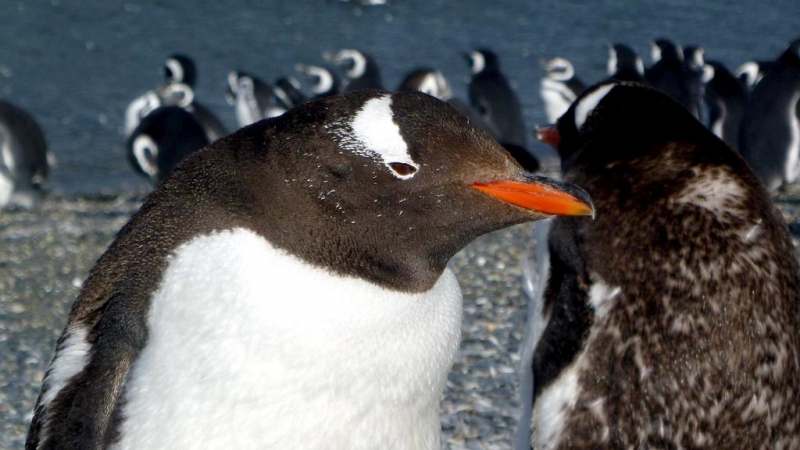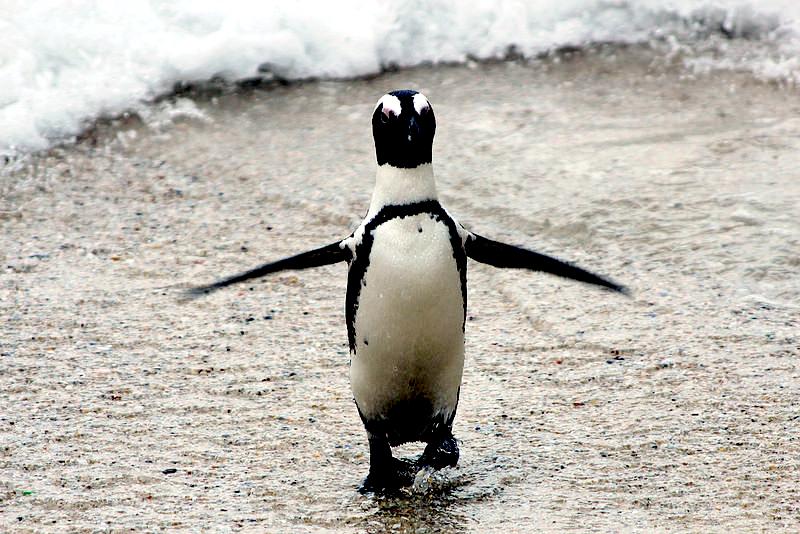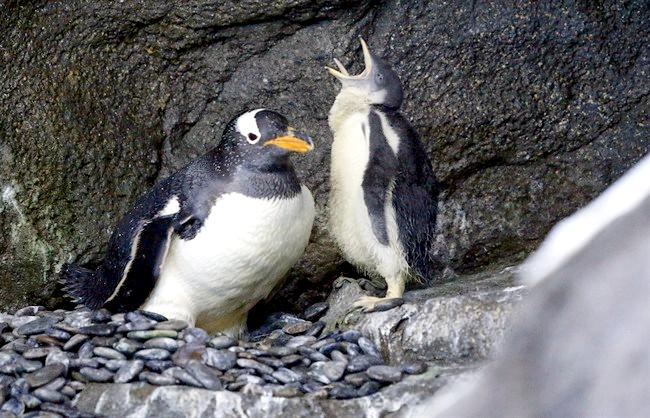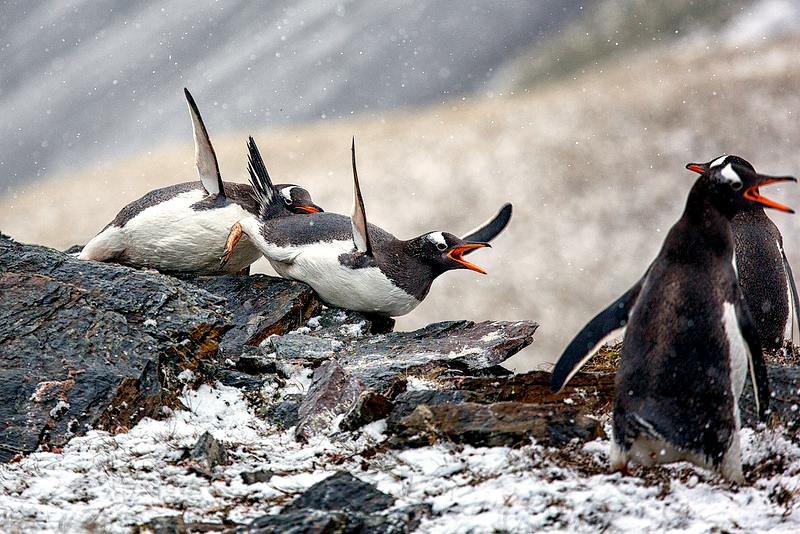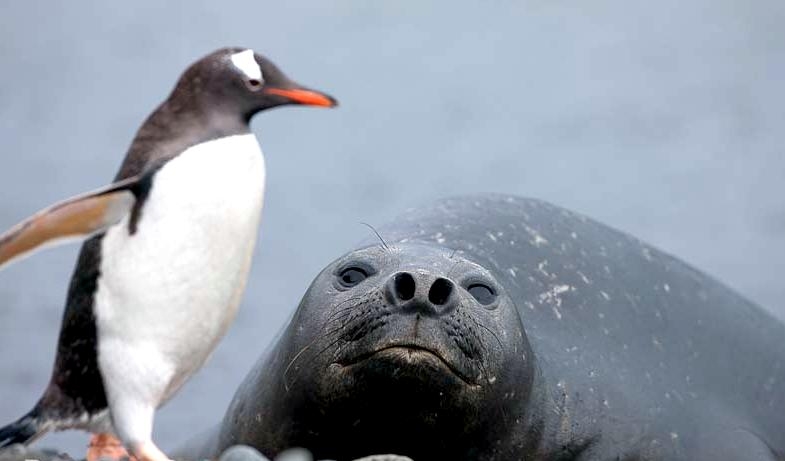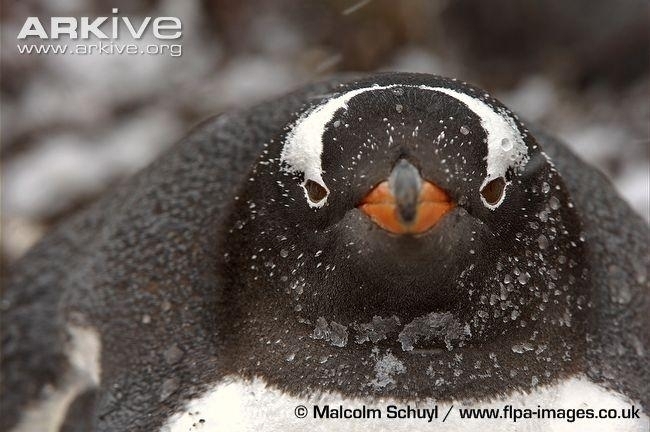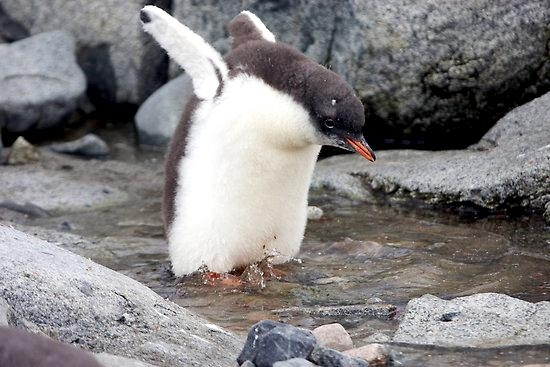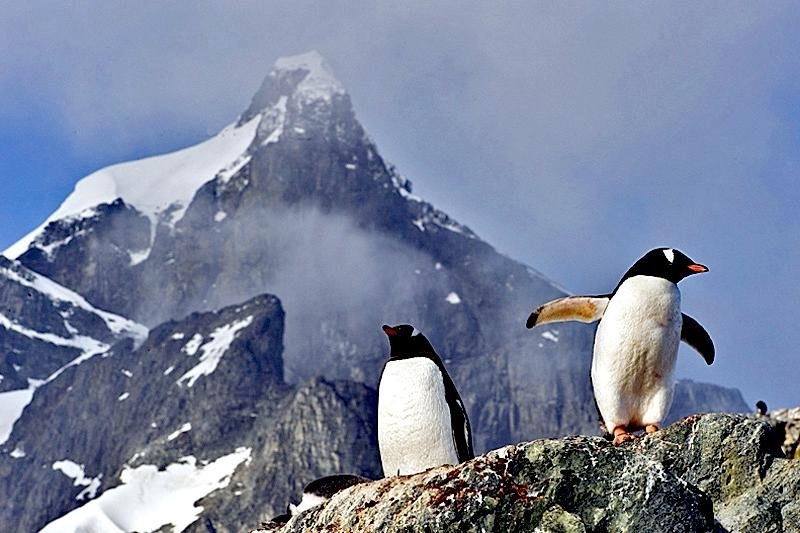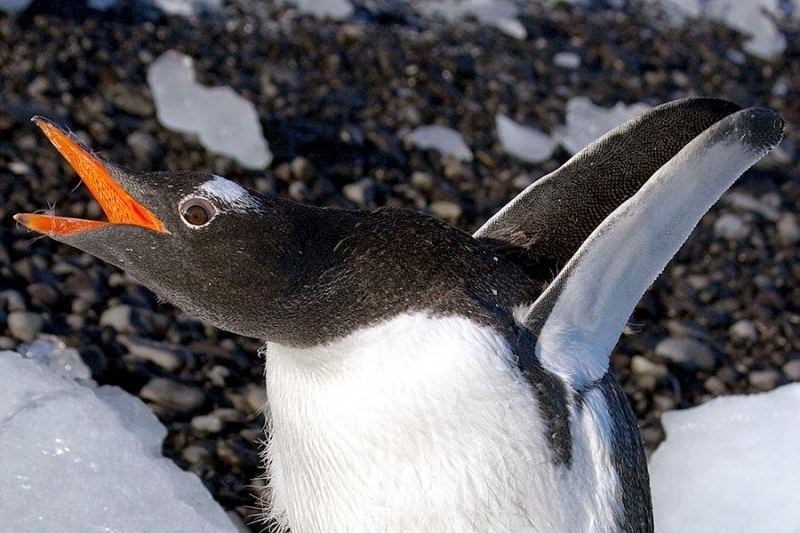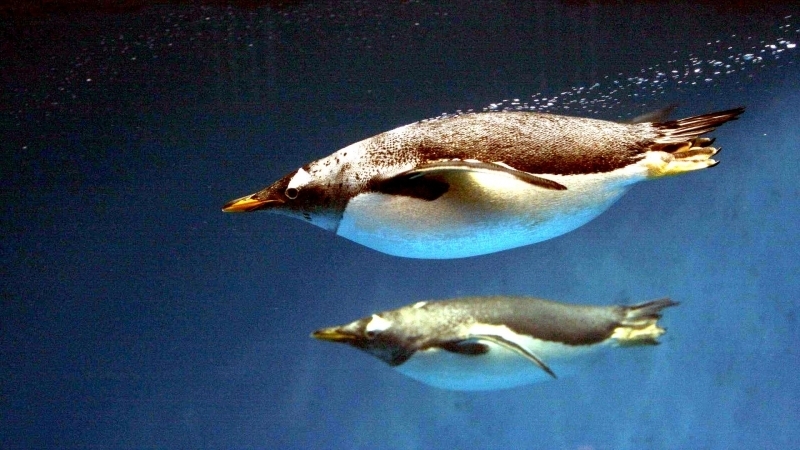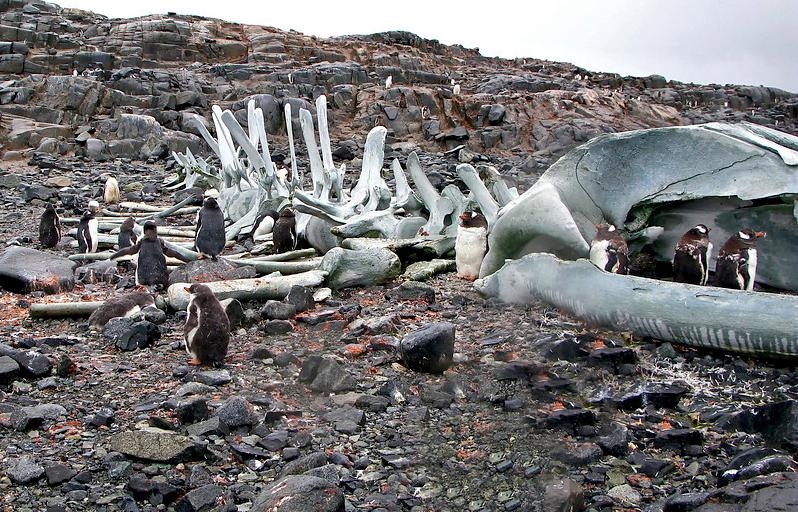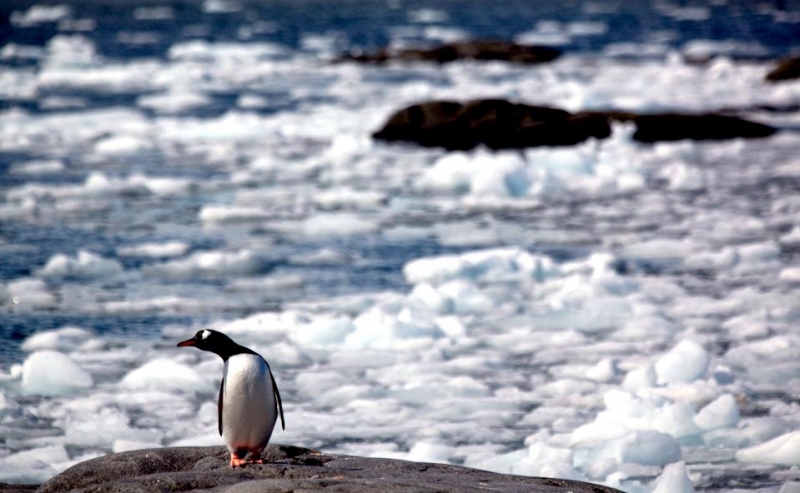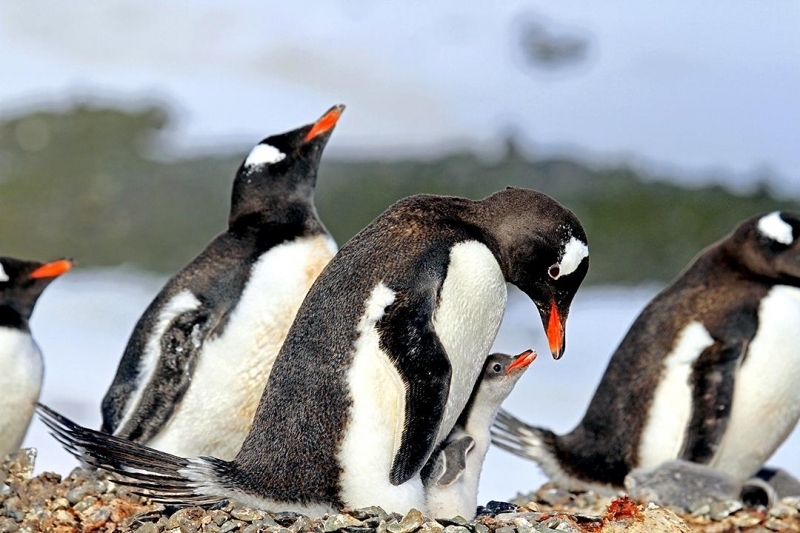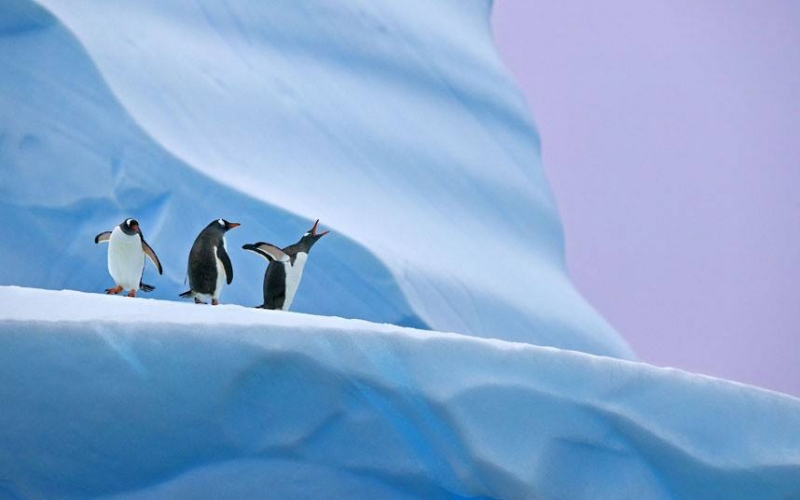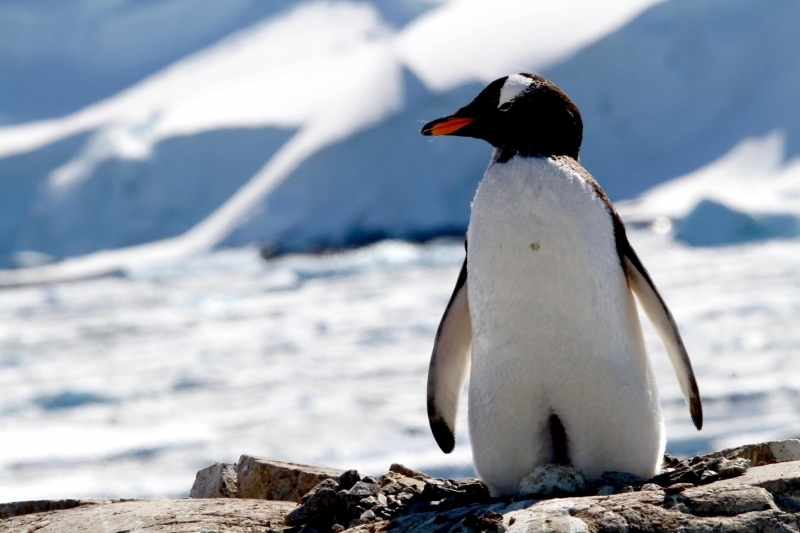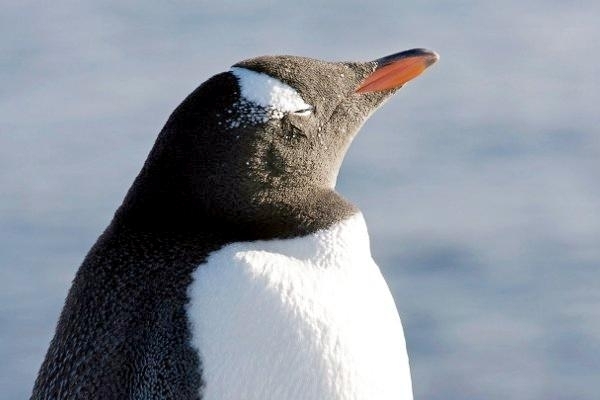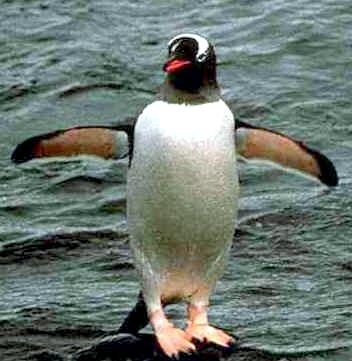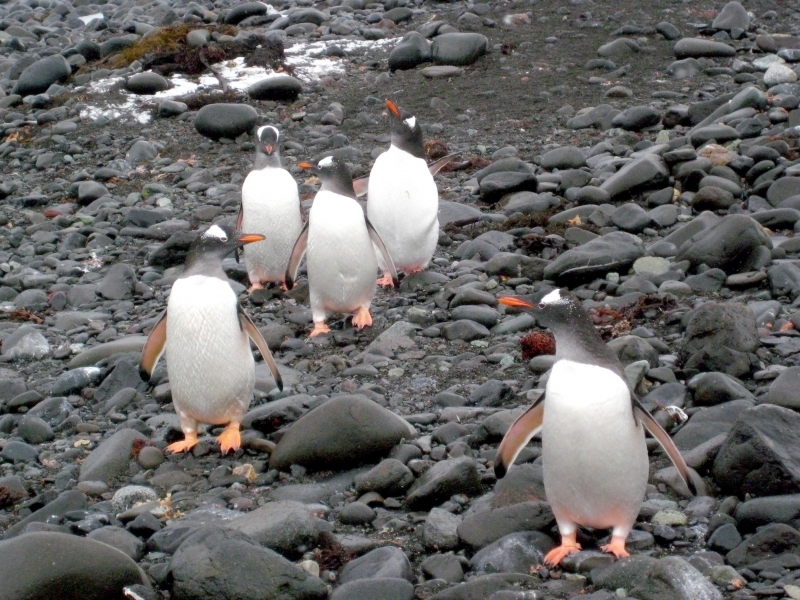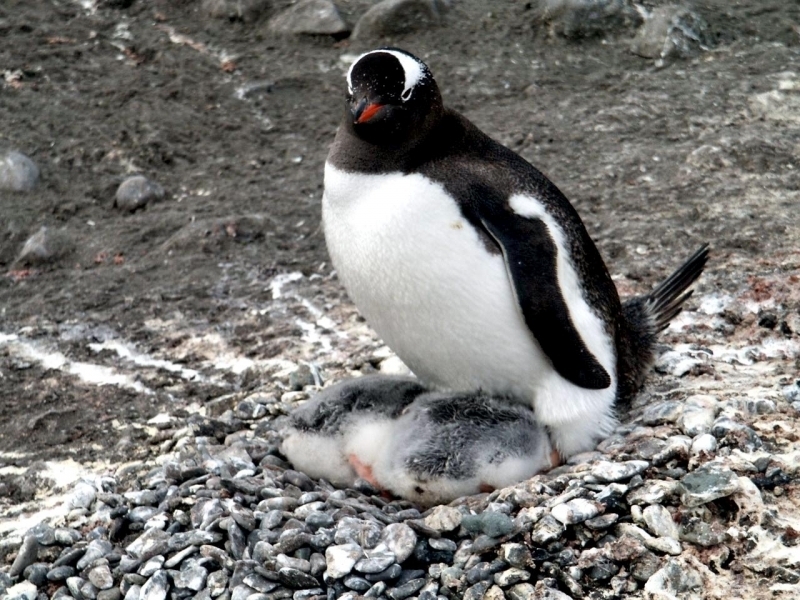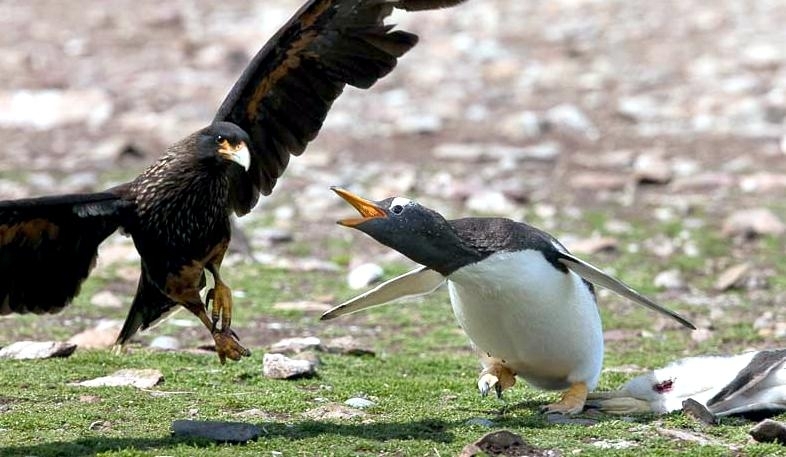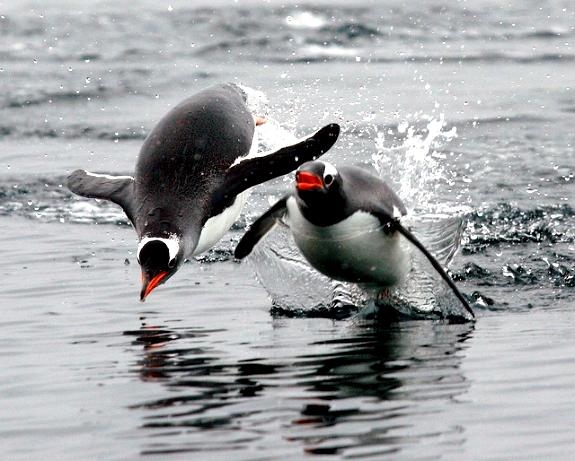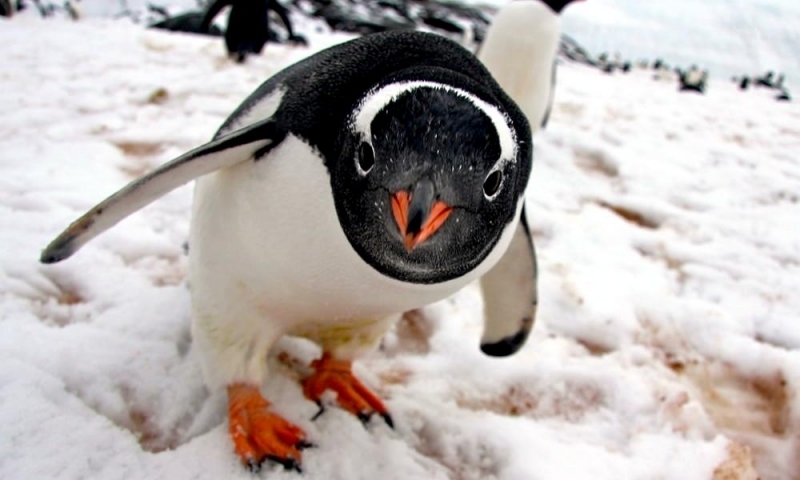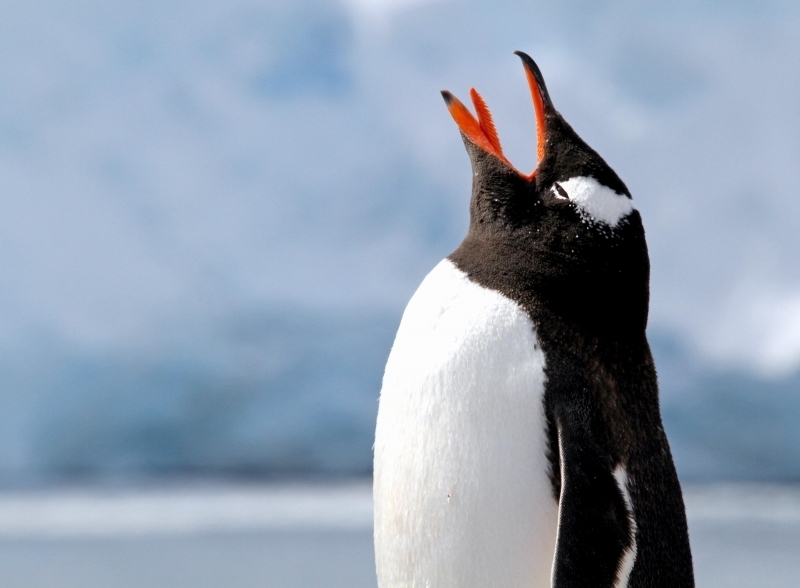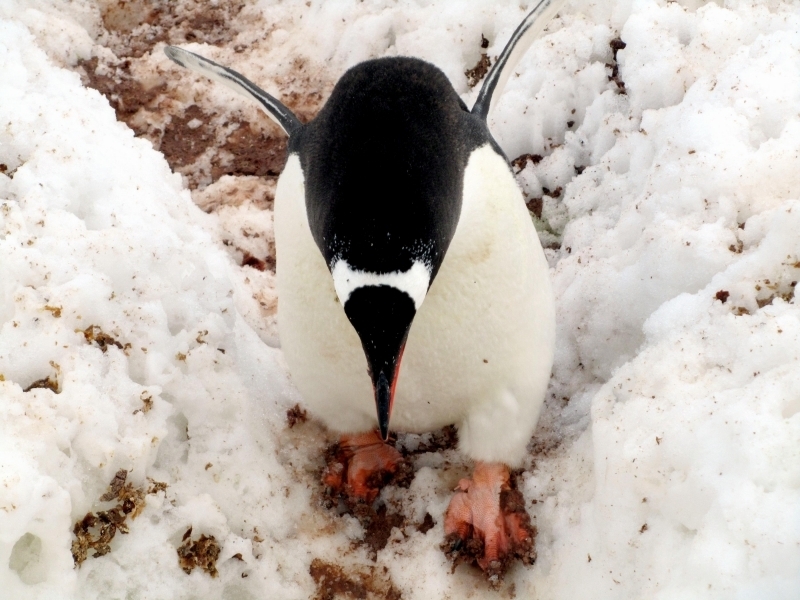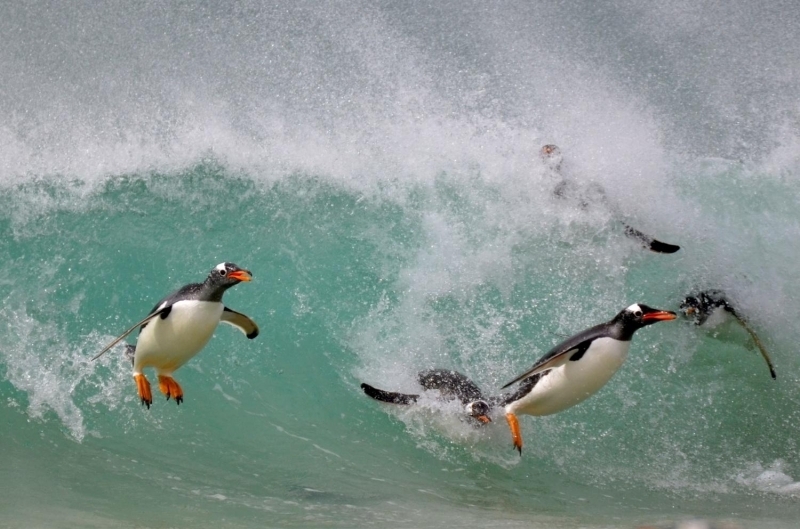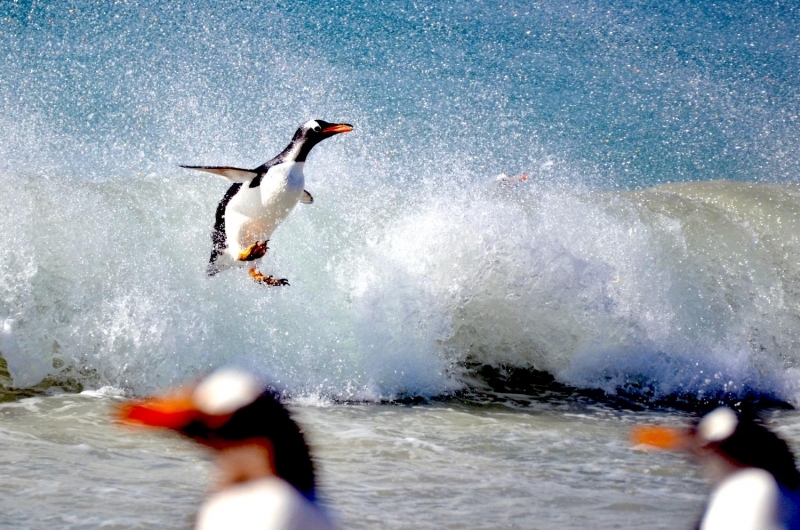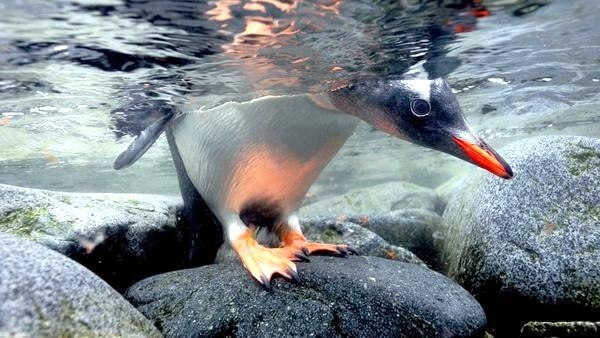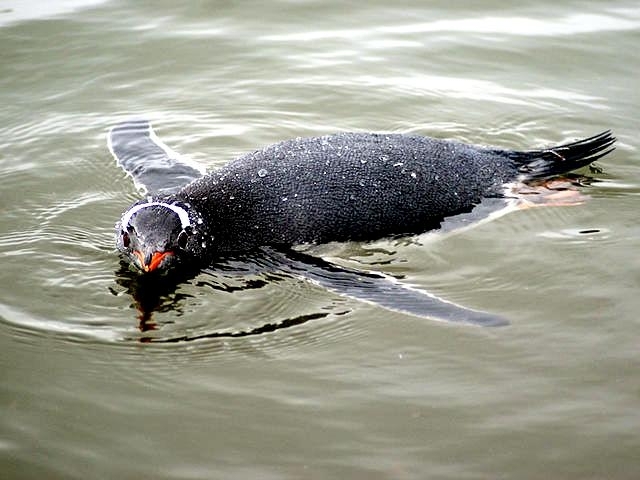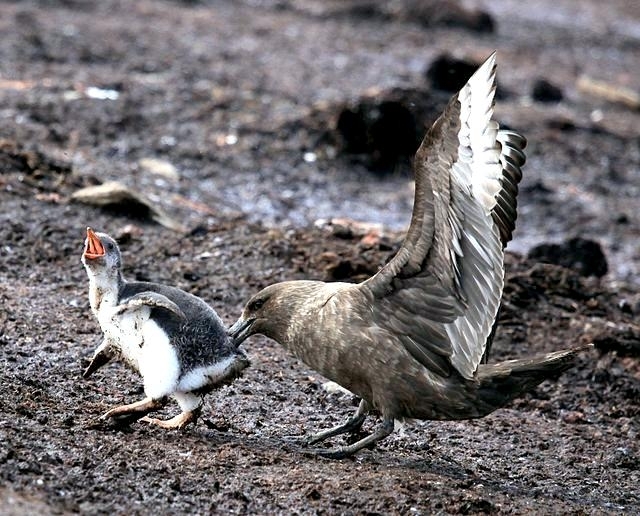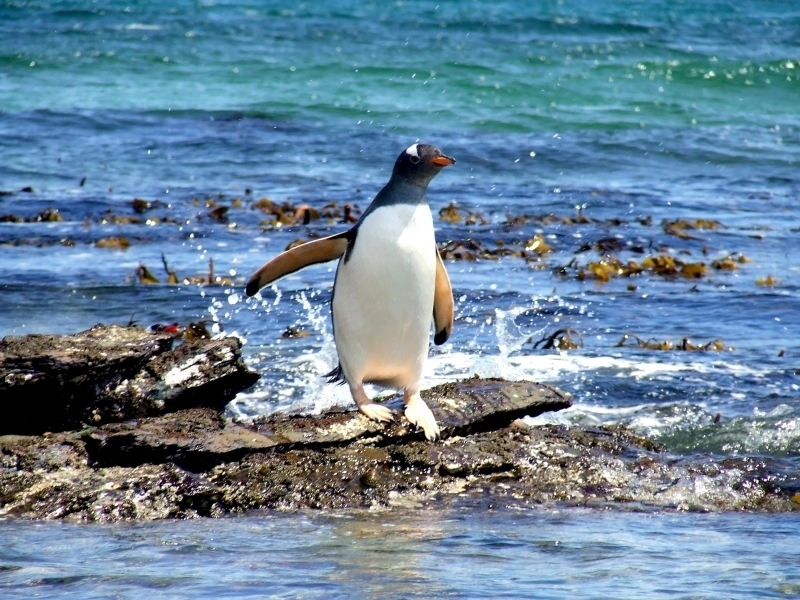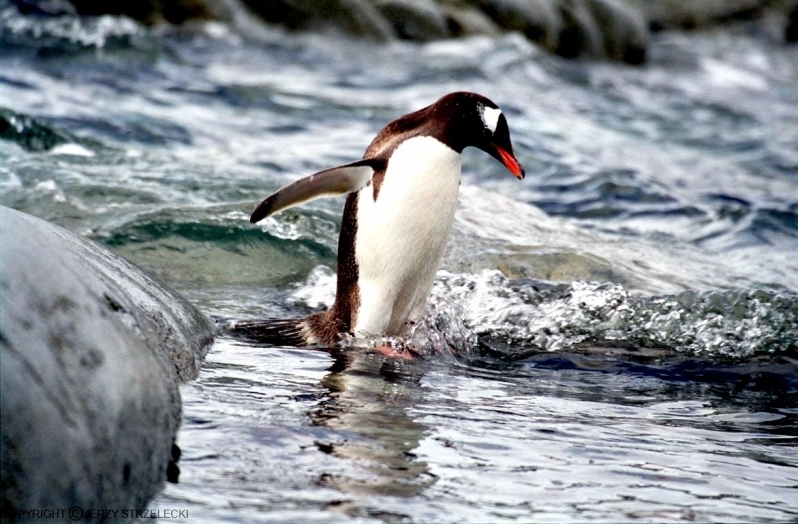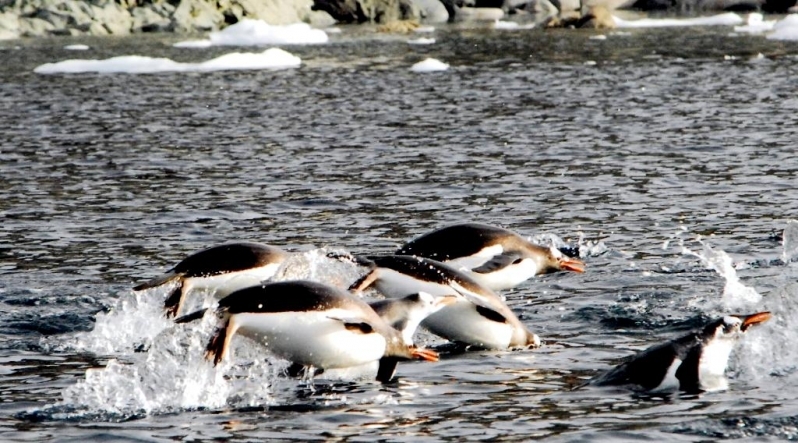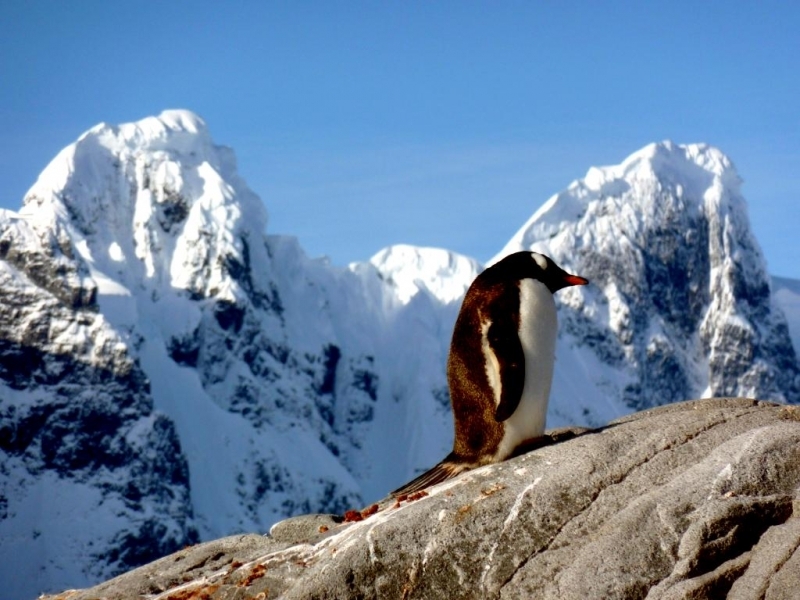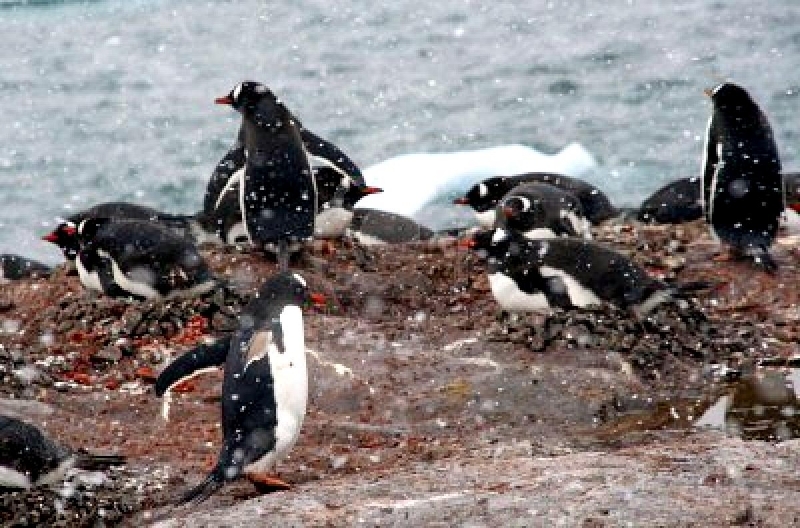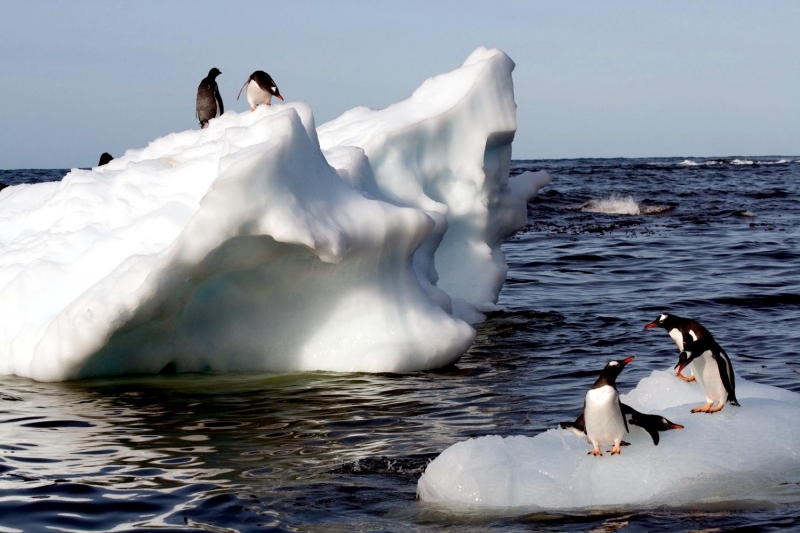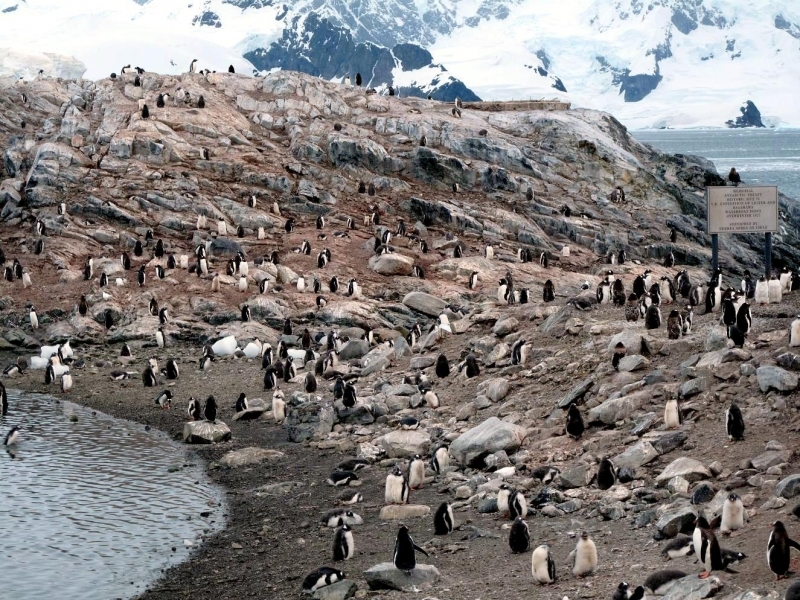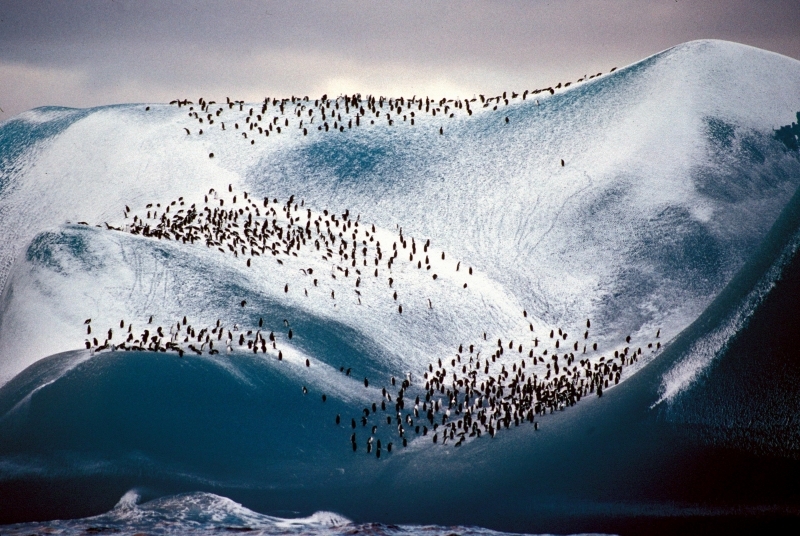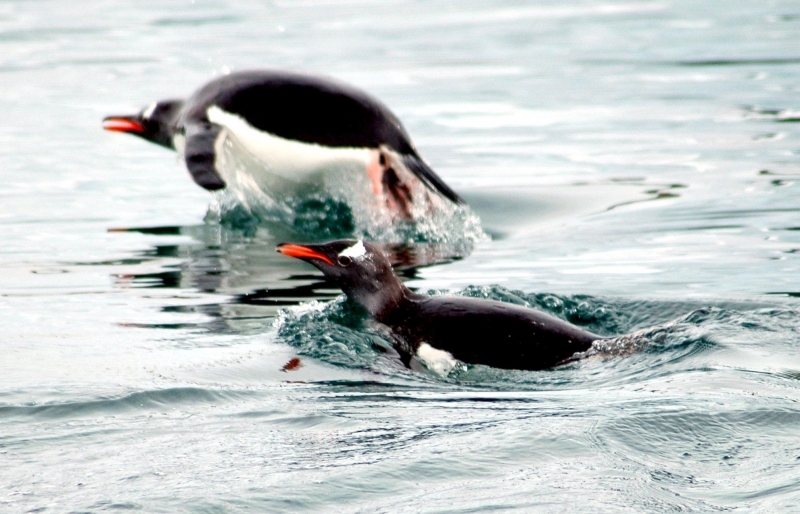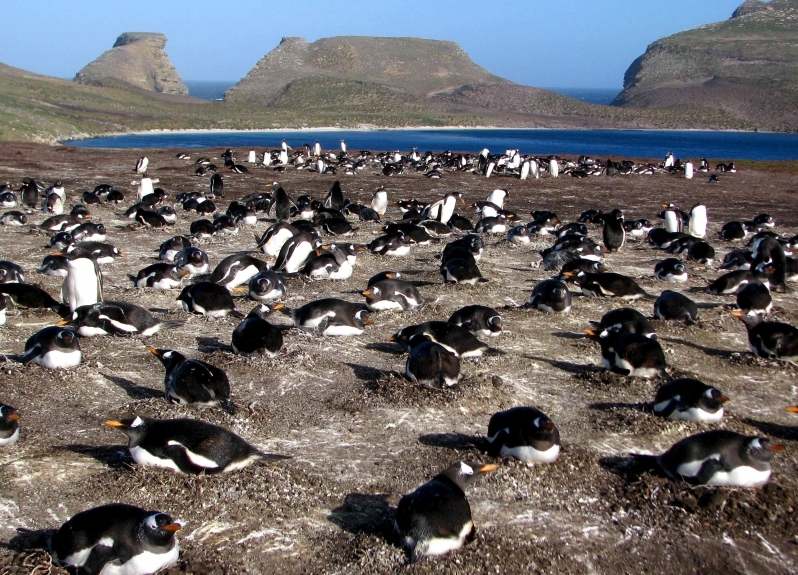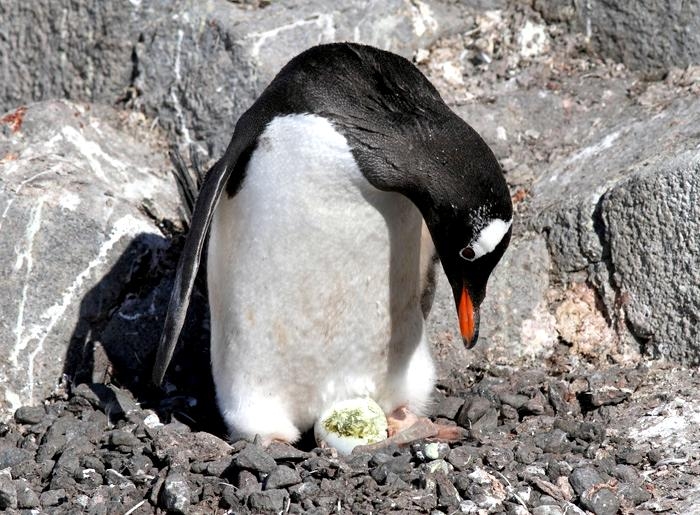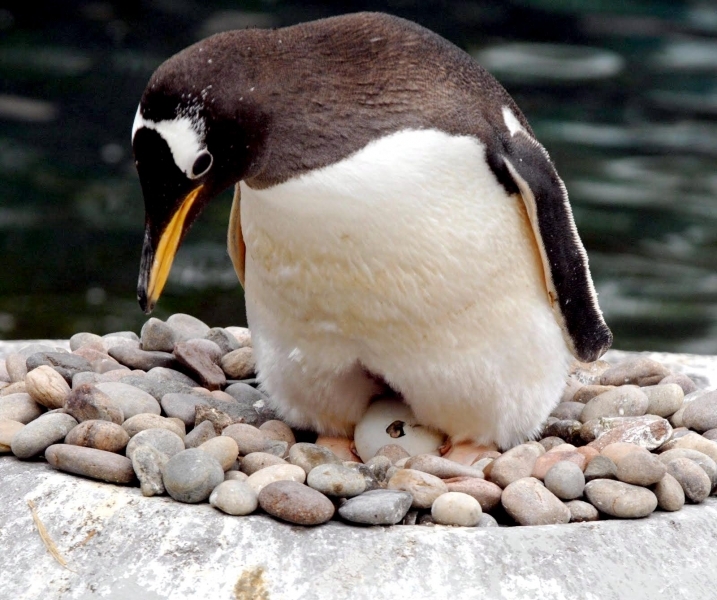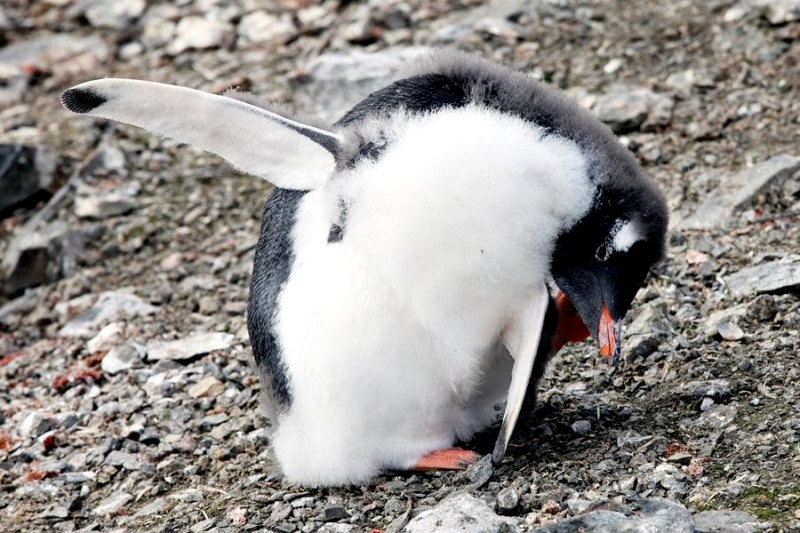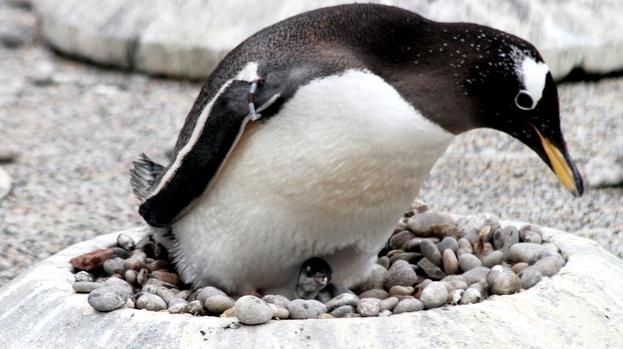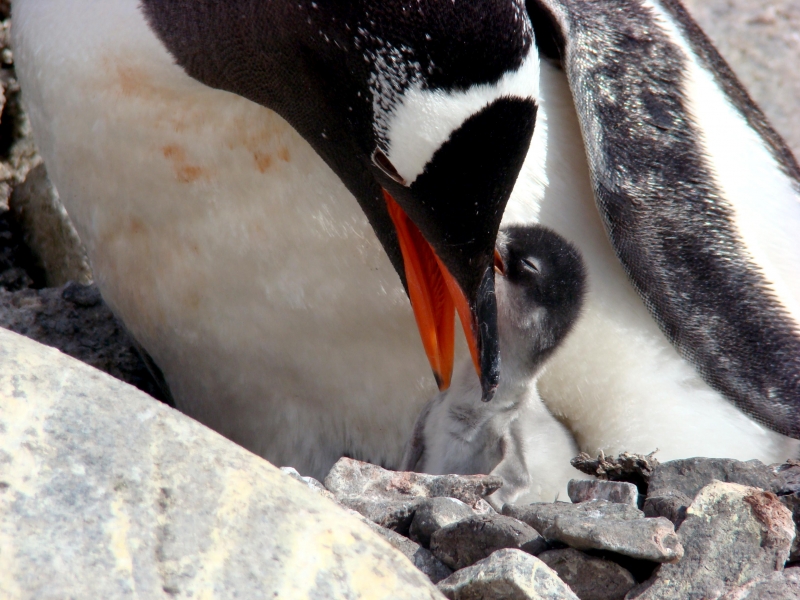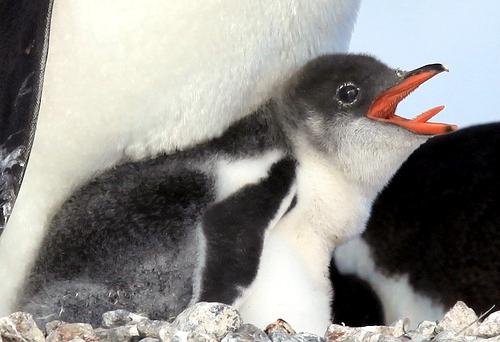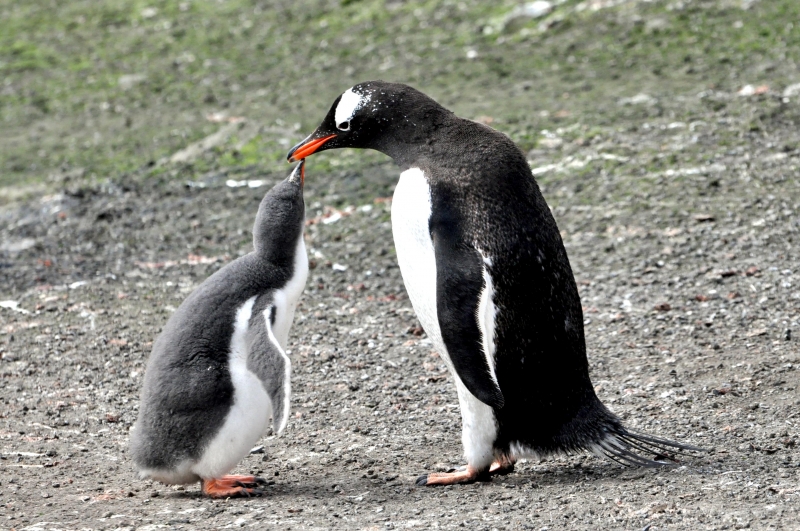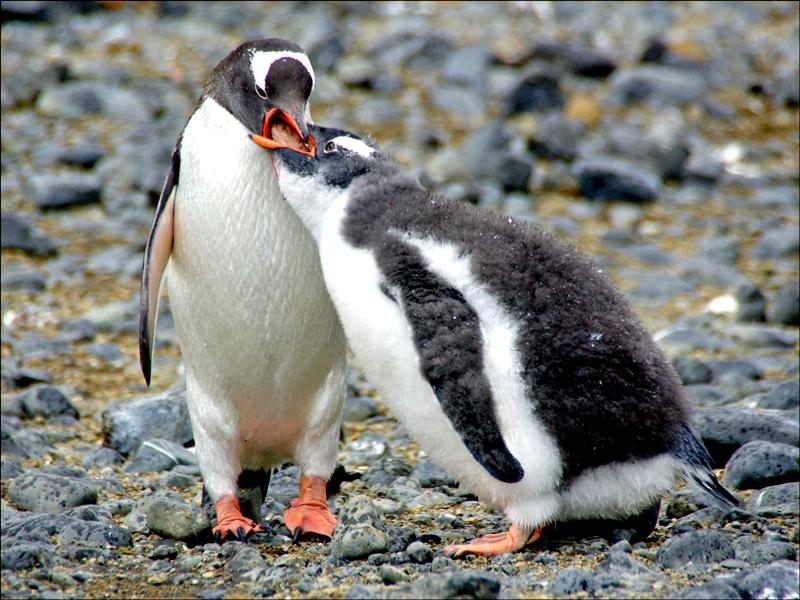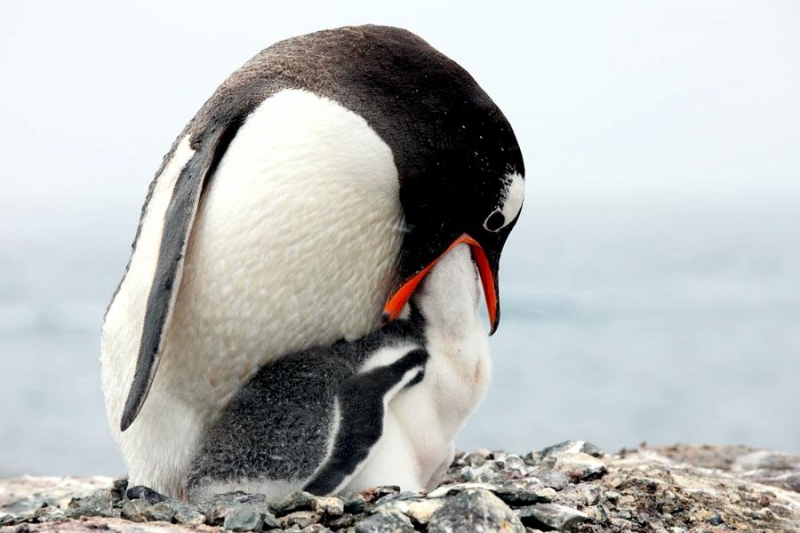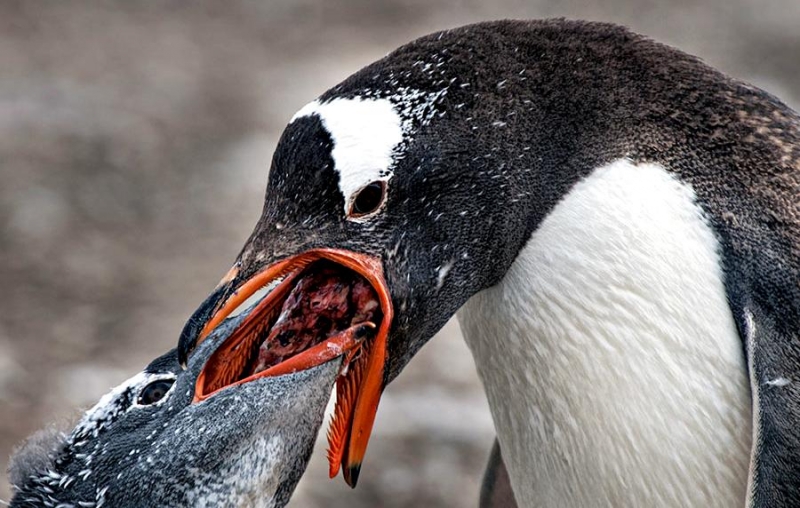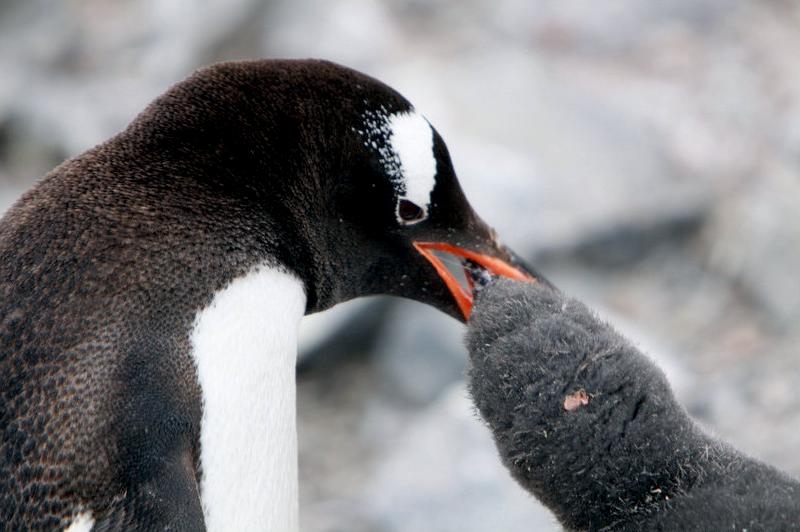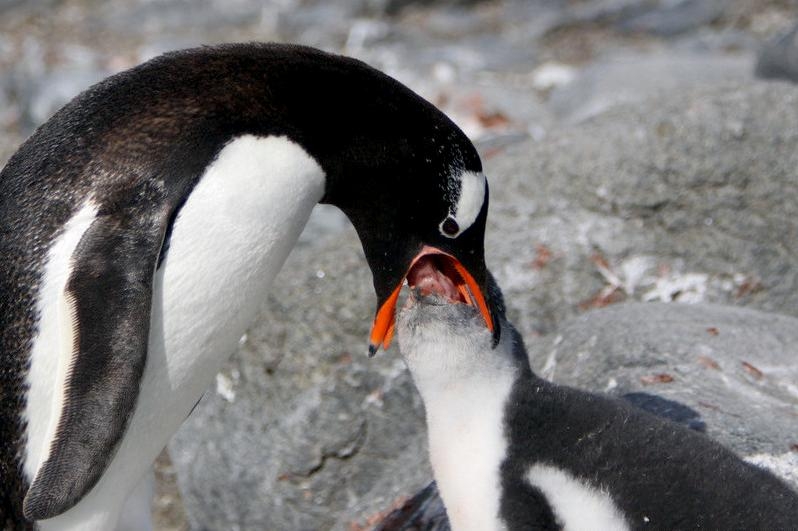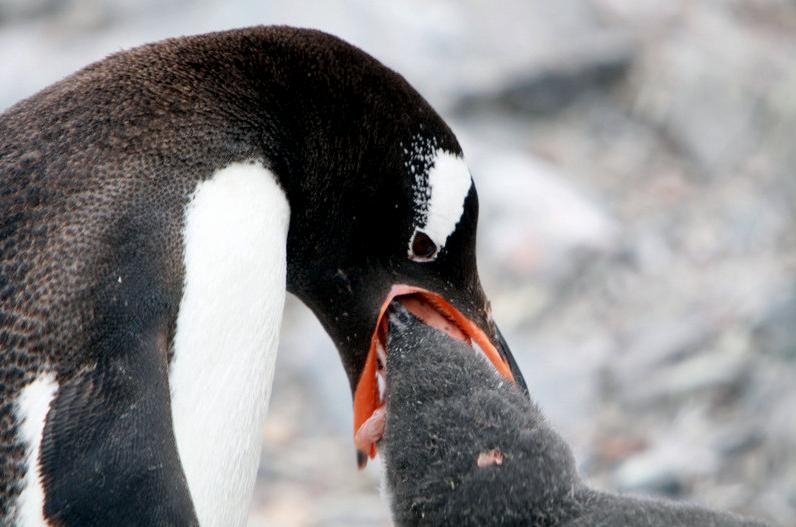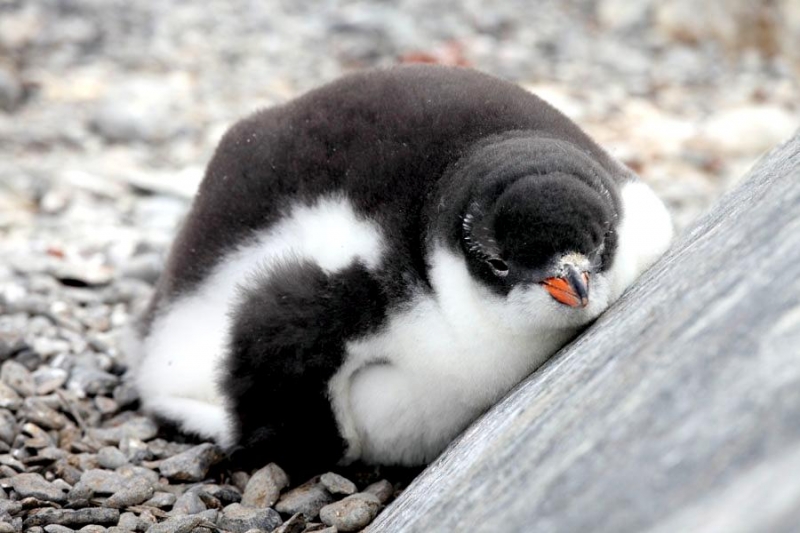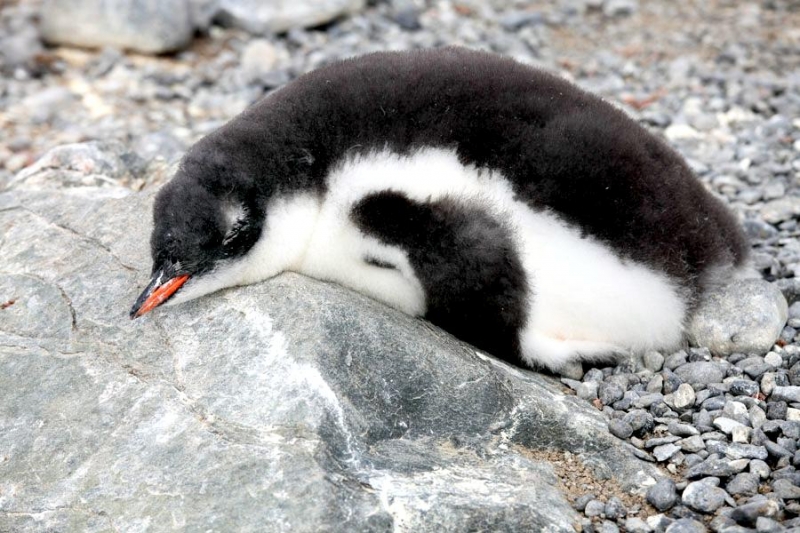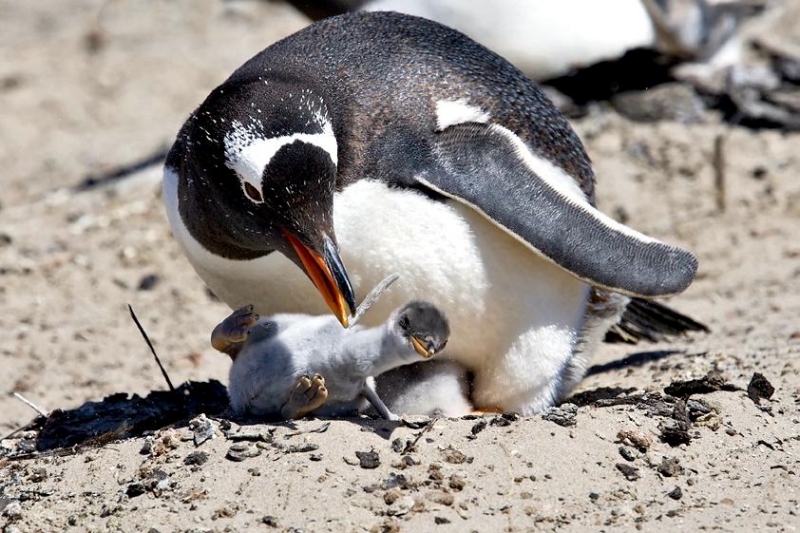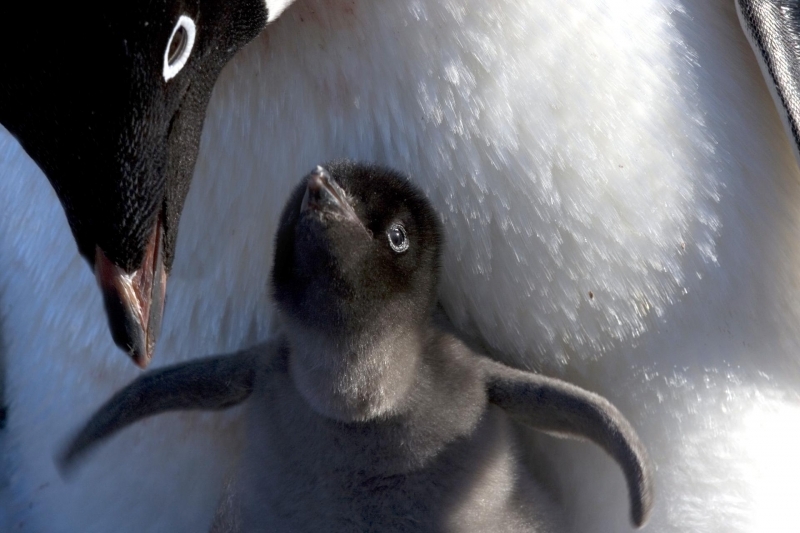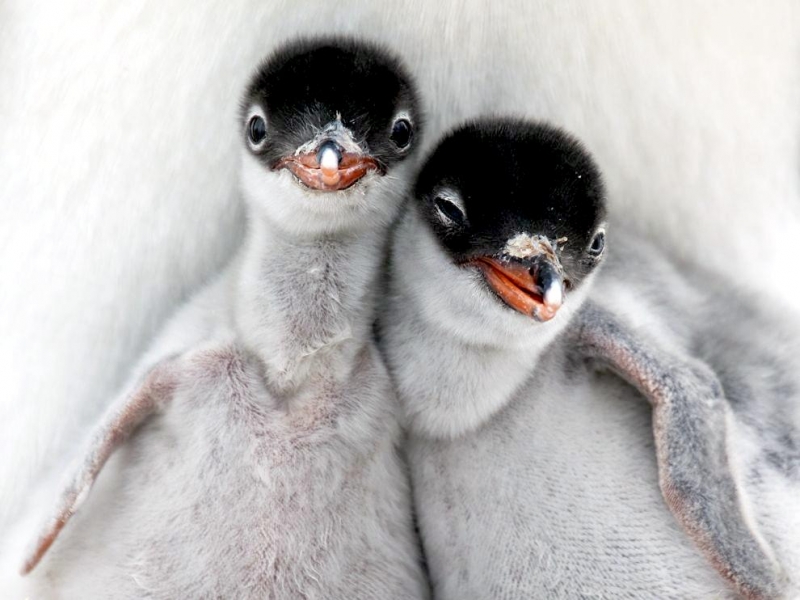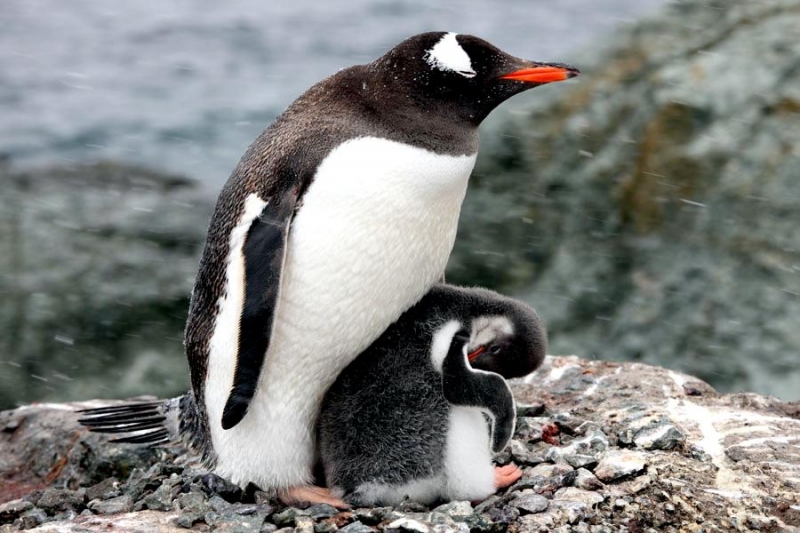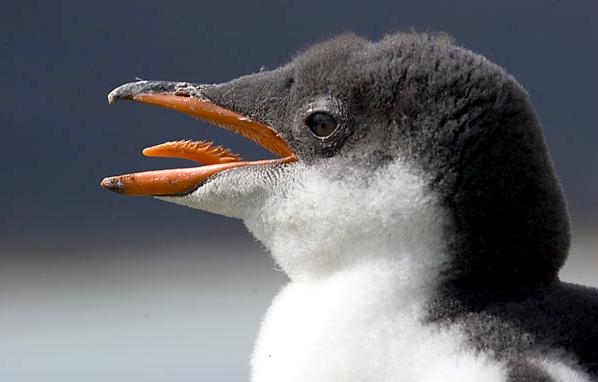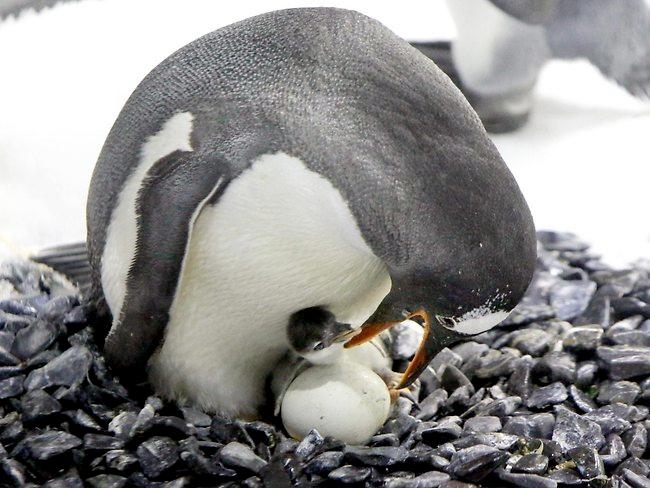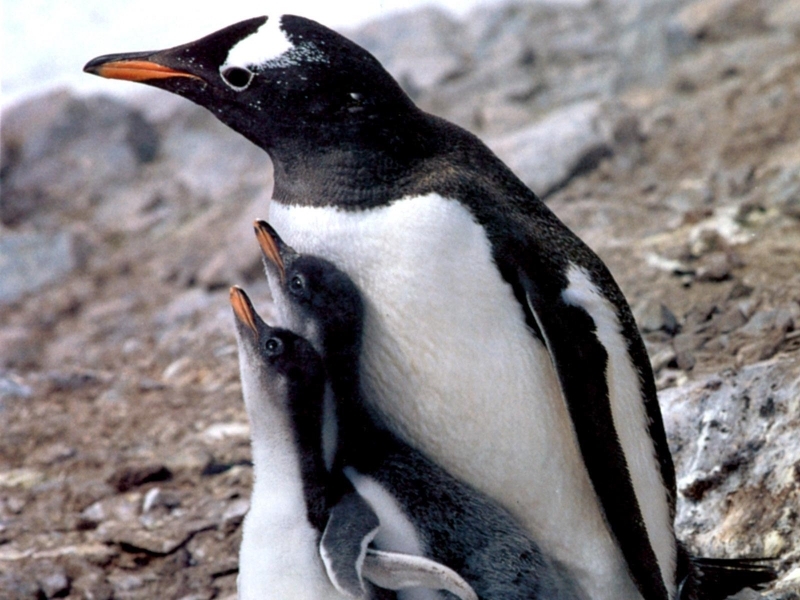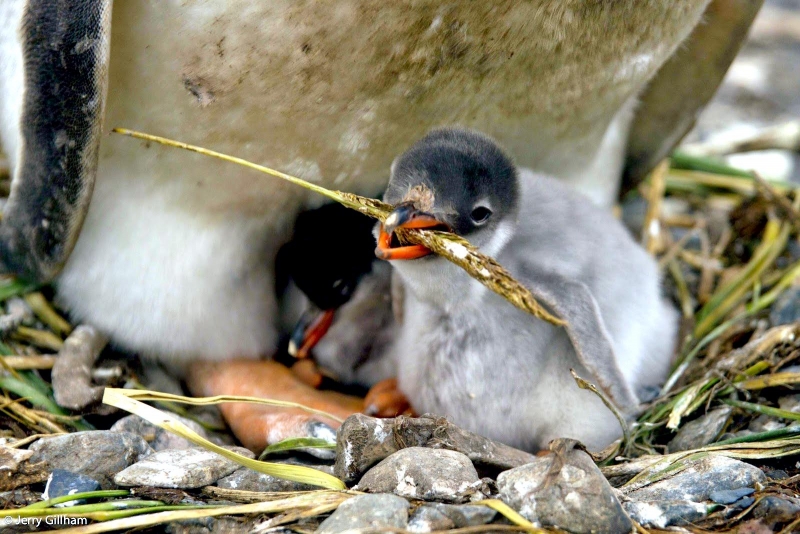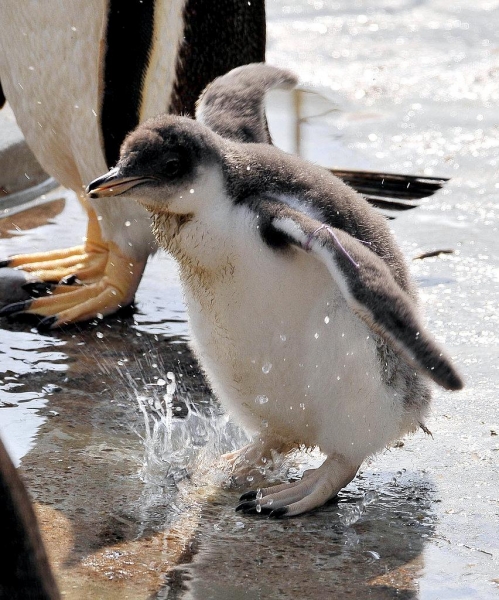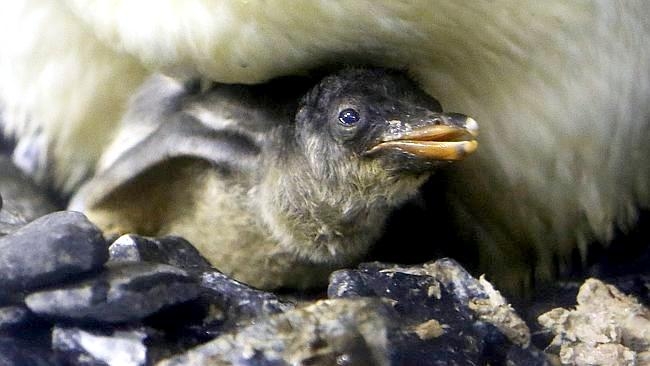“Pygoscelis papua”
Gentoo Penguins are another Antarctic penguin species first described in 1871 by Johann Reinhold Forster, an explorer & naturalist who accompanied Captain Cook on his late 18th century voyages. The application of Gentoo to the penguin is unclear. The Oxford English Dictionary notes that “gentoo” used to be an Anglo-Indian term used as early as 1638 to distinguish Hindus in India from Muslims. The English term may have originated from the Portuguese gentio meaning “gentile”. The word Penguin first appears in the 16th century as a synonym for the now extinct Great Auk. When European explorers discovered what are today known as Penguins in the Southern Hemisphere, they noticed their similar appearance to the Great Auk of the Northern Hemisphere and named them after this bird, although they are not closely related. Gentoo Penguins are small birds standing about 80 centimeters tall and weighing an average of 5 kilograms. They have black plumage on the back and head with a white band that runs across the crown of the head from eye to eye. They have a bright orange bill & orange feet. These seabirds are the fastest swimming of all penguin species reaching speeds of up to 36 kph as well as one of the rarest. Their breeding sites are found on sandy or stony beaches on the Antarctic peninsula and around the Crozet, Falkland, Macquarie, Prince Edward, South Georgia, South Orkney and South Sandwich Islands.
Although Gentoos return to the same breeding area each year, they tend to move their sites away from previous sites because of the guano that accumulates during the breeding season. Some colonies have been observed returning to the same site year after year only to suddenly move to an entirely new site several kilometers away. The reason for these moves is unknown. Colonies are typically small, consisting of a few 100 breeding pairs and breaking into sub-colonies when colonies become too large. Gentoo Penguins forage close to shore diving to average depths between 20-100 meters, although in some cases they have been recorded diving to 200 m. A Gentoo Penguin will dive up to 450 times per day to forage. They feed on small fish, crustaceans and squid. On land, they have no predators but Skuas and other seabirds will prey on unattended eggs and small chicks. Killer Whales and Leopard Seals are known predators when Gentoos are at sea.
Gentoo Penguins breed in rookeries or colonies and make nests from a variety of materials including feathers, grass, rocks and twigs. Females lay 2 eggs in late October that are incubated by both parents for about 1 month. Although eggs are laid as much as 4 days apart, they hatch within 24 hours of each other. Both parents brood the 2 chicks, alternating daily to feed and protect them. The chicks remain in the nest until they have their adult plumage when they are between 3-4 weeks of age. Adults alternate foraging daily, typically traveling within 20 kilometers of the breeding site. As the chicks grow, they form large crèches as the chicks are left in groups while both parents forage. Although chicks fledge around 3 months of age, the parents continue to feed them for several weeks. Following breeding season, Gentoo Penguins return to the open ocean to forage prior to their annual molting season, which lasts for 2-3 weeks.
